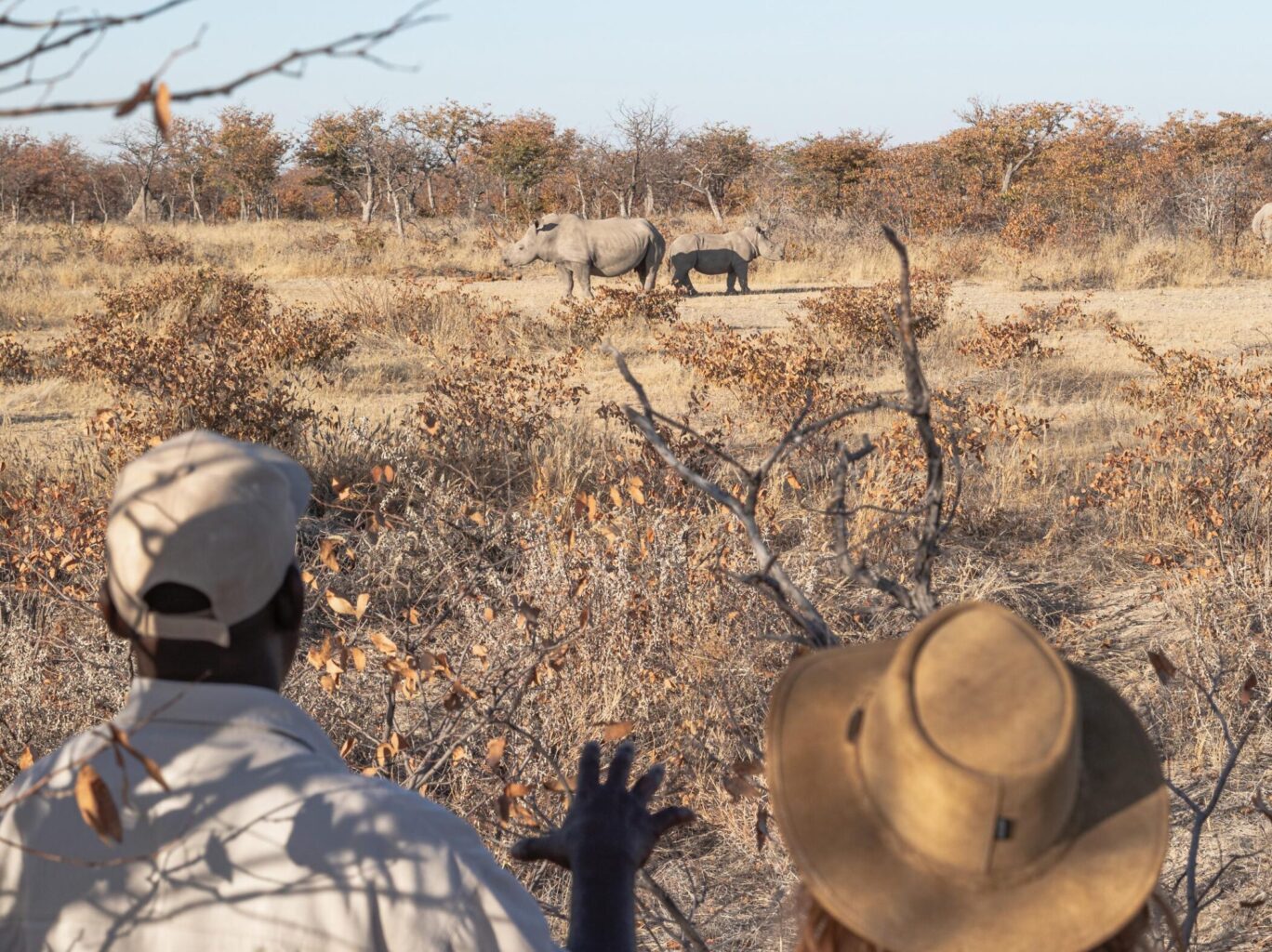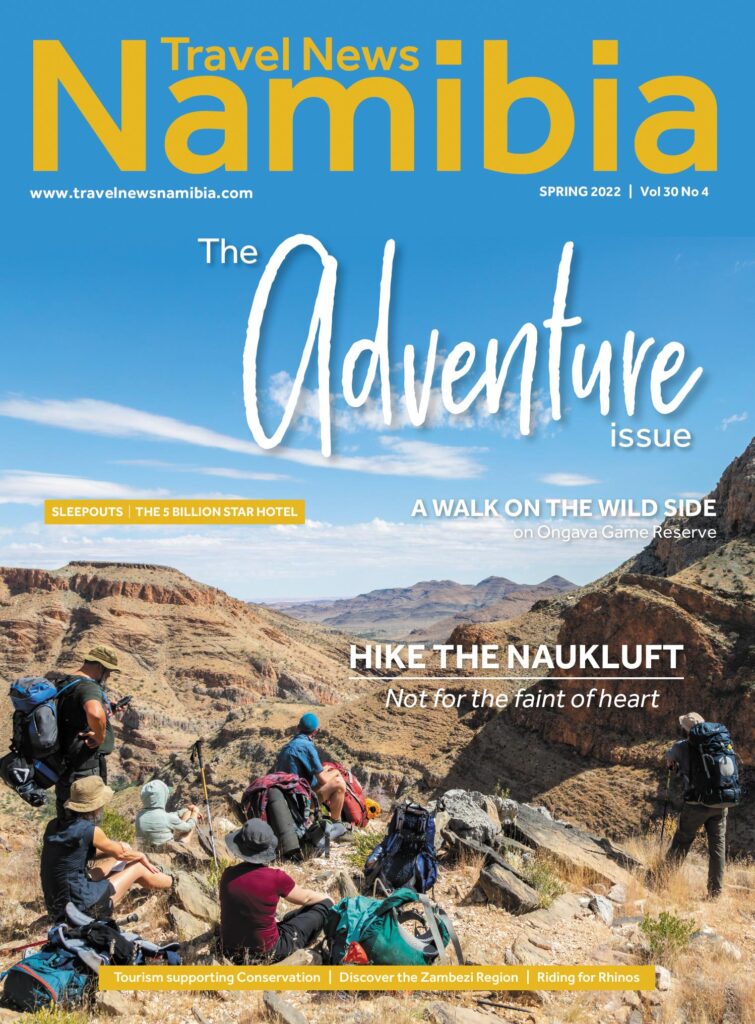

A WALK ON THE WILD SIDE
TREAD LIGHTLY AND LISTEN TO NATURE AT ONGAVA GAME RESERVE
Text Charene Labuschagne | Photographs Le Roux van Schalkwyk
From the Spring 2022 issue
Crisp winter air hangs over the horizon, creating a soft white filter for every tree and hill. Looking down, you see a veil of yellow and orange mopane leaves crushing softly under your feet. In a single file line, you tread lightly, one foot in front of the other, so as to not disturb the life that surrounds you, or the black rhino spotted at the lodge’s subtly lit waterhole the previous night.
The bushveld on this 30,000-hectare private game reserve bordering Etosha is a thrilling adventure. Being on foot in this environment is indescribable. Once you have soaked up the incredible animal sightings from one of Ongava’s game viewers, peeped through the viewing window at the hide, and even seen a rock hyrax scurry over the deck, it is time to take the next step: to lace up your walking shoes and venture into the wilderness, ushered by a trained and armed guide.
There is so much magic when you look closer, longer and more intentionally. It is in these moments that you spot an exceptionally camouflaged chameleon perched dead still on a tree trunk, or learn that rhinos use scratching posts conveniently located on the highway of animal crossings. When you stay a little longer and begin to decipher the tracks and markings, an elephant bath is revealed, and their sheer size and strength become overwhelmingly obvious at the sight of trees shredded to shards of bark. If you look a little more closely at the prevalent mopane leaves, you begin to notice the crystal-like dots formed by tiny insects. The Oshiwambo people discovered it as a sweet treat. Once you are made aware of their existence, these crystals appear everywhere like dew drops on the vegetation.
Without the hum of a car engine and the clicking of camera shutters, you truly get to listen to nature. Ongava’s walking safari is a quintessential bushveld experience, bringing you closer to the intricate details so often overlooked, immersing you deeper into the conservation efforts of the reserve, and allowing you to trek this vast terrain in much the same way as the original, rugged explorers did.
Safety is essential when traversing the territory of big cats and even larger mammals. Ongava’s roster of dedicated and enthusiastic guides are trained in emergency procedures, should a wild animal become distressed or uncomfortable with visitors. For this reason, the walking safari is better suited to smaller groups. This in turn allows you to let your curiosity blossom and ask your guide any and all questions about the area, its fauna and flora.
The guides appointed at Ongava have extensive experience on the reserve, and recently sharpened up their knowledge under the expert guidance of Cameron Pearce. As the managing and chief instructor of Ongava’s guide training and development, Cameron engaged the resident guides in daily walks. Training from such a highly acclaimed guide, recently named the Safari Guide of the Year, elevates the entire walking safari experience for both guides and guests.
Come tread lightly and listen to nature at Ongava Game Reserve. TNN






